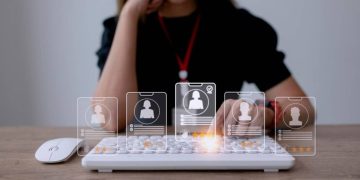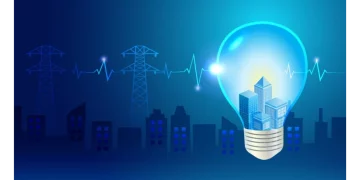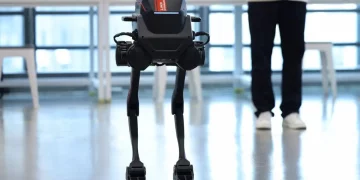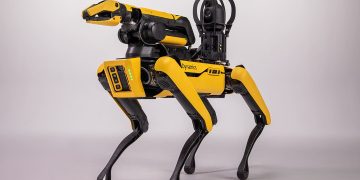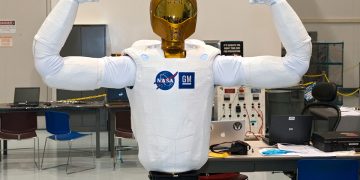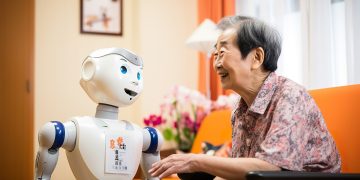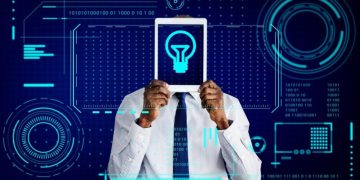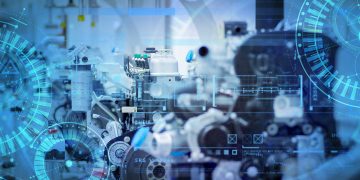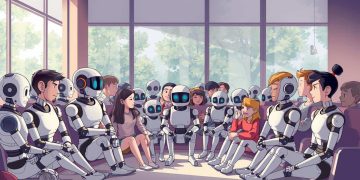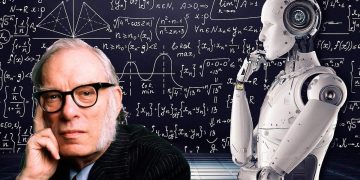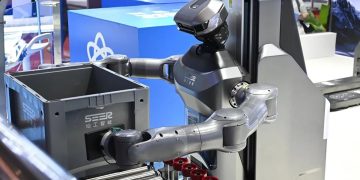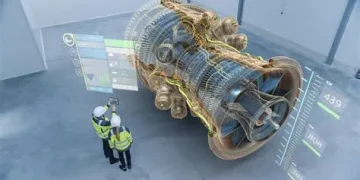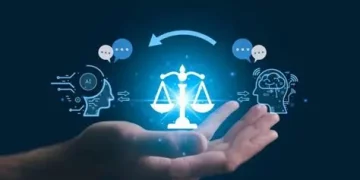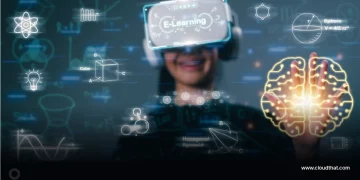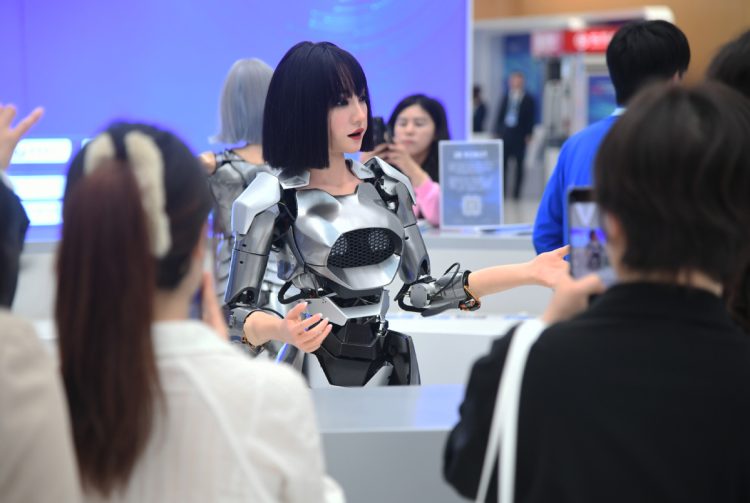The silhouette of the modern economy is being redrawn, not by the invisible hand of the market, but by the precise, articulated hands of humanoid robots. This is not a gradual automation of isolated tasks, but a comprehensive displacement and redefinition of labor itself. We are transitioning from an economy where robots assist human workers to one where humanoid machines become the primary workforce across the entire spectrum of industry. This “Great Robot Economy” promises unprecedented productivity and the liberation of humanity from mundane toil, but it simultaneously threatens to unravel the very fabric of our societal structure, which is built upon the principle of labor in exchange for income. To navigate this coming transformation, we must first envision the world it will create—a world where humanoids are ubiquitous in retail, services, and agriculture. We must then confront the monumental economic and social questions this future poses, particularly the viability of systems like Universal Basic Income (UBI) and robot taxation. Finally, we must understand the technological breakthroughs—general-purpose dexterity and adaptive learning—that are making this seismic shift not just possible, but inevitable.
A Day in the Automated World: Humanoids in Retail, Services, and Agriculture
Imagine a city where human labor is the exception, not the rule. The morning commute is lighter, as many traditional jobs no longer exist. Your day begins at a café where a humanoid barista, its movements a flawless ballet of efficiency, takes your order, roasts the beans, steams the milk to a perfect microfoam, and presents your latte with a polite, synthesized greeting. It does not tire, it does not forget your custom modifications, and its quality control is absolute.
In the retail sector, the transformation is complete. Large-scale warehouses are already automated, but now the front-of-house is too. Humanoid clerks stock shelves with superhuman speed and accuracy, using real-time inventory data. They assist customers not with scripted responses, but with a deep, AI-powered knowledge of every product’s features, supply chain history, and compatibility. In a hardware store, a robot can not only identify a specific type of screw but also diagnose the underlying home repair issue and guide you through the entire process, projecting 3D schematics onto the wall. The few remaining human employees are “experience managers,” handling complex complaints or providing a personal touch for high-value clients.
The service industry undergoes its own revolution. Hospitals deploy fleets of caregiver robots capable of lifting patients safely, monitoring vital signs continuously, and administering medication with perfect accuracy. They provide companionship to the elderly, reminding them to take their pills and alerting human medical staff to any anomalies. In hospitality, robotic concierges, cleaners, and chefs operate 24/7, ensuring a standardized, flawless, and efficient experience that eliminates the variability of human error.
Perhaps the most profound change occurs in agriculture. The family farm is now a fully automated food production facility. Teams of rugged, all-weather humanoids work around the clock. They plant seeds with millimeter precision, identify and eliminate weeds with targeted lasers instead of blanket herbicides, and harvest produce at the exact peak of ripeness. Drones, working in concert with the ground robots, provide aerial imagery and data on soil moisture and crop health. This “precision agriculture” on a massive scale leads to staggering increases in yield and a dramatic reduction in environmental impact, but it renders the traditional farmhand entirely obsolete.
The Socio-Economic Reckoning: New Models for a Post-Work Society
The economic paradox of the Great Robot Economy is stark: who powers an economy based on consumption when the majority of the population has been made redundant from production? The foundational link between work and income is severed, demanding a radical re-imagining of our economic models.
1. Universal Basic Income (UBI): The Foundation of a New Social Contract
In a world where robots generate the majority of economic value, UBI transitions from a radical idea to a pragmatic necessity. It would be a regular, unconditional cash payment made to every citizen, irrespective of employment status.
- The Rationale: UBI would serve as a fundamental income floor, preventing mass destitution and maintaining aggregate demand in the economy. If people have no income, they cannot buy the goods and services the robots produce, leading to economic collapse. UBI would allow for a gradual and managed transition, giving people the financial security to retrain, pursue education, engage in care work, or explore creative and entrepreneurial ventures that are uniquely human.
- The Counter-Argument: Critics argue that UBI could be prohibitively expensive and potentially disincentivize work. However, in a context where most traditional jobs simply no longer exist, the latter argument loses its force. The greater risk is societal alienation—a “leisure plague” where people lose a sense of purpose and contribution.

2. Robot Taxation: Funding the Transition
To pay for UBI and other social programs, a new system of taxation must target the owners of the automated means of production.
- The Concept: A “robot tax” would not be a literal tax on a physical machine, but a levy on the economic value generated by automation. This could take the form of a significantly higher corporate tax rate for highly automated firms, a tax on the productivity gains attributed to AI and robotics, or the removal of tax depreciation benefits for automated equipment.
- The Purpose: The revenue generated would fund the UBI, alongside massive public investments in education, healthcare, and infrastructure. It would also serve as a moderating force, potentially slowing the pace of automation just enough to allow society to adapt, and ensuring that the immense wealth generated by robots does not flow exclusively to a tiny technological elite.
The implementation of these models would represent the most significant socio-economic restructuring since the Industrial Revolution, moving us toward a society where human worth is decoupled from economic productivity.
The Technological Engine: General-Purpose Dexterity and Adaptive Learning
This economic transformation is being unlocked by two critical technological advancements that move robots beyond the confines of factory assembly lines.
1. General-Purpose Dexterity: The Human Hand as a Benchmark
For decades, robots excelled at repetitive, precise tasks in controlled environments. The real world is messy and unpredictable. The breakthrough of general-purpose dexterity involves creating robotic hands and manipulators that can match the versatility of the human hand.
- Tactile Sensors and Fine Motor Control: Advanced tactile sensors allow robots to “feel” an object’s texture, weight, and fragility. Combined with AI-driven motor control, this enables a robot to safely pick up a ripe strawberry without crushing it, then moments later, use enough force to tighten a bolt on a piece of machinery. This single skill allows one robot platform to perform thousands of different tasks, from folding a shirt to assembling a complex electronic device, making them viable for the unstructured environments of retail, services, and agriculture.
2. Adaptive and Embodied AI Learning: Learning by Doing
Early industrial robots were painstakingly programmed for one specific task. The humanoids of the Great Robot Economy learn differently. They use simulation-to-real-world (Sim2Real) training and reinforcement learning to acquire skills through practice.
- The Process: A robot can practice a task, like making a bed, millions of times in a hyper-realistic virtual simulation in a matter of hours. It learns through trial and error what works. This learned model is then transferred to the physical robot. Once in the real world, “embodied AI” allows the robot to continue learning from its environment. If it drops a glass, it adjusts its grip. If it encounters an obstacle it hasn’t seen before, it can navigate around it. This capacity for continuous, unsupervised learning is what allows these robots to handle the infinite variability of the human world, making them truly general-purpose workers.
The Great Robot Economy is not a question of “if,” but “when.” The technological building blocks are falling into place with astonishing speed. The vision of humanoids performing every conceivable job is no longer fantasy; it is a plausible, and perhaps imminent, reality. The challenge it presents is not primarily technological, but human. Can we forge a new social contract that distributes the bounty of automation broadly? Can we find meaning and purpose in a world where traditional work is scarce? The success of the Great Robot Economy will not be measured by its productivity metrics, but by its humanity. It will be the ultimate test of our wisdom, our compassion, and our ability to shape our tools before they, in turn, shape us.

